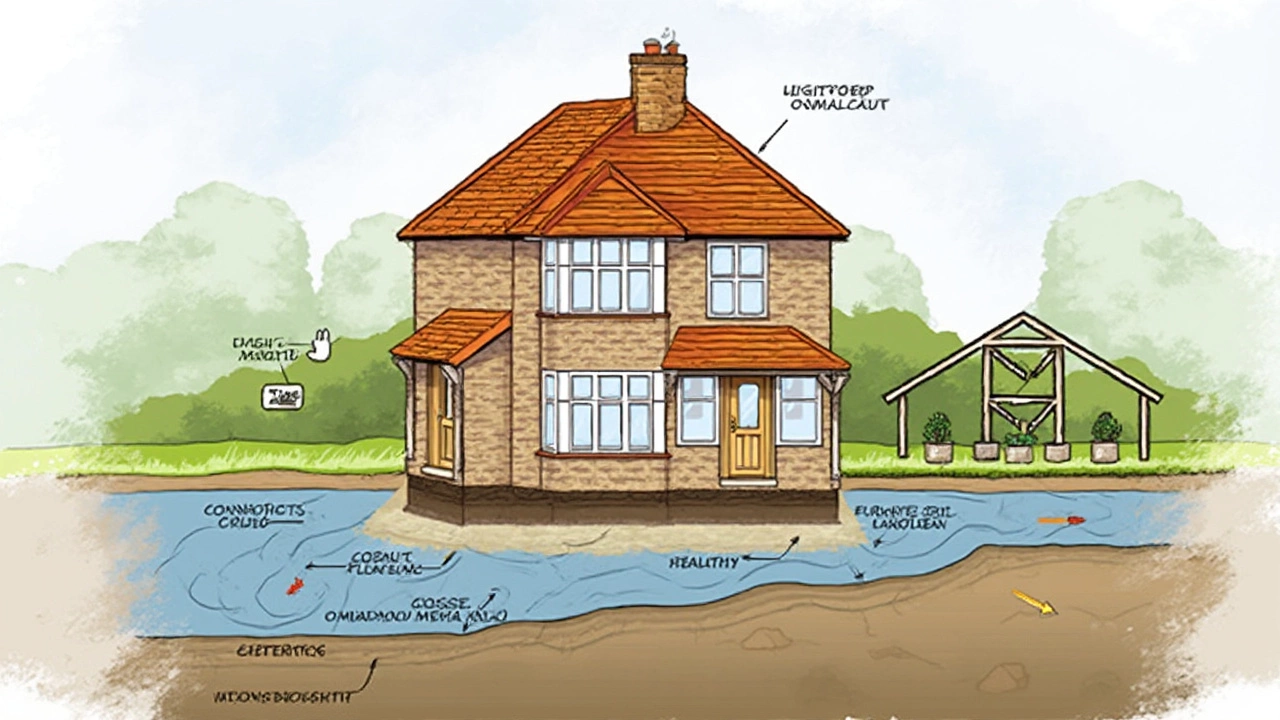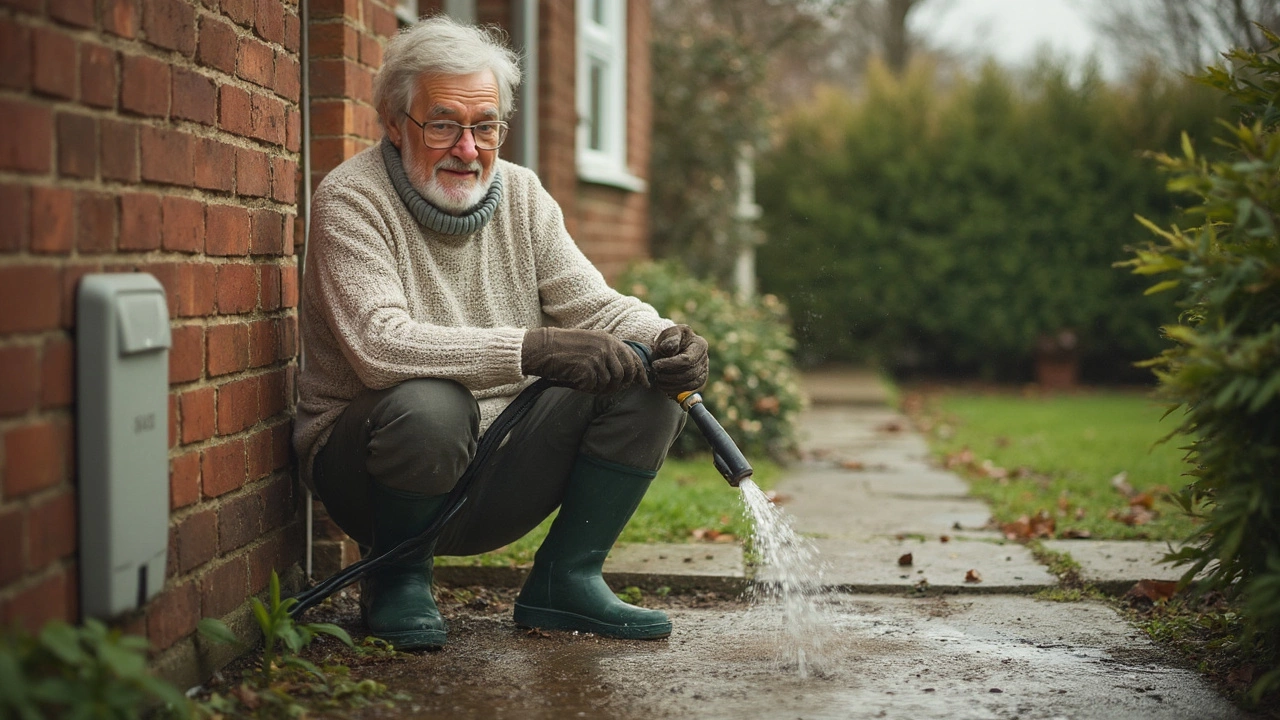If you've ever spotted a long, jagged crack running along the side of your house or felt your floors slant just a bit, you know that uneasy feeling in your gut. No one wants to mess with foundation problems. The stakes feel sky-high, because foundation repairs can wipe out your savings in one swoop—not to mention the stress of living in a house that's literally shifting beneath your feet. It sounds almost surreal to think the garden hose in your backyard could be the hero here. But there’s real talk going on among homeowners, especially in places where summers dry out the soil until it crumbles like an old cookie: Should you water your house foundation to keep it from cracking?
Why Foundation Cracks Happen: It’s All in the Soil
So let's get right to it—why do foundations even crack in the first place? The short answer is, it’s all about soil movement. Let the ground get too dry, it shrinks. Let it soak with rain, it expands. It’s this back-and-forth shifting that puts tons of stress (literally) on your concrete slab or pier-and-beam foundations. You probably know someone who lives in Texas, Oklahoma, or the Midwest and has dealt with this—those areas are ground zero for “expansive clay” soils. According to the American Society of Civil Engineers, more than 50% of the US homes built on expansive clay will experience foundation distress during their lifetimes. If you notice stair-step cracks in your brick exterior or gaps between windows and walls, odds are your soil has played a major role.
Expansive clays like to swell when they absorb water and shrink when they dry. During a drought, soil can pull away from your foundation by several inches. As soon as rain returns, the clay swells again and pushes against the slab. What makes this worse is inconsistency around your house—shady spots stay moist longer, sunny patches dry out faster, and you end up with a full-on tug-of-war beneath your biggest investment. If the ground movement gets extreme, your foundation doesn't stand a chance. It shifts, cracks, and sometimes even breaks apart. The costs of repairing a foundation in the U.S. range from $4,000 to more than $20,000, depending on the severity and local labor rates.
Keeping the soil moisture consistent (not too wet, not too dry) can dramatically slow down these movements. A study from Texas A&M showed that houses with controlled soil moisture around the foundation had 30% fewer structural issues over 15 years compared to homes with no moisture regulation. So the facts back up the common sense: Watering your foundation isn't just an old wives' tale—it's your ticket to fewer headaches and much less drywall dust in your living room.
How Watering Your Foundation Works (And When You Should Do It)
If you picture someone out there with a watering can, sprinkling the foundation like a flower bed, that's not too far off for some folks—but there's a more effective approach. The goal is never to create a swamp; it's to keep the soil at a steady level of moisture, especially during those blazing-hot, dry stretches when your yard feels like the Sahara. The "right" way to water will depend on the kind of soil under your house (most commonly clay), the slope of your land, drainage, and even the presence of trees or shrubs.
Here’s the sweet spot: You want to prevent the area around your foundation from baking in the sun until it cracks, but you also don’t want water pooling up against your walls and flooding your basement. Most home experts recommend using a soaker hose positioned about 18-24 inches away from the foundation. Run it for 20-30 minutes every few days during dry weather. Pay close attention if your house faces the west or south—those sides get roasted the hardest and dry out the fastest.
Consistency is your friend in all of this. Rather than deep-soaking once a week, try to keep the soil evenly moist with lighter, more frequent waterings. And don’t forget to adjust during rainy periods—too much water can be just as damaging as too little. If you’re a data junkie or just love automation, some smart irrigation sensors now track soil moisture and water only when needed. That means you’re not wasting water, and your foundation stays happy. Here’s where homeowners mess it up: overwatering, which softens the soil and can send moisture seeping into crawlspaces or basements. It’s all about balance, like just-right Goldilocks porridge for your slab.
- Only water if your area is going through a dry spell (several weeks with little or no rain).
- If you see the soil pulling away from the foundation by more than 1/2 inch, it's time to water.
- Never let water pool up against your house; aim for even, damp—not soaked—soil.
- Use mulch to retain soil moisture and reduce temperature swings near foundations.
- If in doubt, test the soil: dig 4-5 inches down. If it’s dry and crumbly, it needs water. If it's cool and holds shape, you’re good.

When NOT To Water: Watch Out for Drainage Traps
It might sound odd after all that, but sometimes watering the foundation can do more harm than good. If your property doesn’t drain well, extra water can gather and apply hydrostatic pressure against the foundation walls. This is basically invisible water-pushing, which can crack even the strongest concrete given enough time. There's a reason old houses in low-lying areas often have that musty, mildewy smell—standing water around the base is just asking for trouble.
Before you reach for the hose, check for the following:
- Grade: Your yard should slope away from the foundation by at least 6 inches over the first 10 feet.
- Gutters: Make sure downspouts direct water at least 5-10 feet away from your house. Clogged gutters can drown a foundation fast.
- Low spots: Fill in dips around the perimeter to keep rainwater from pooling up.
- Basements: If you have basement leaks, extra water could make things worse. Fix drainage and waterproofing issues before you start watering.
A simple test? After a steady rain, walk outside and see if you’re squishing through mud near your foundation. If yes, you’ve got drainage problems. Deal with those first, or you’ll swap cracks for leaks. Also, avoid watering during times of heavy rainfall—you’ll just be adding stress to soil that’s already saturated. If you’re not sure about the drainage, home inspectors can check it for you, especially before you buy a house in a high-clay area.
How Cracks Start—And Which Ones Should Keep You Up at Night
Let’s be real. Not all cracks are foundation killers. Hairline cracks—less than 1/8 inch wide—are very common in concrete and are usually nothing to lose sleep over. They’re cosmetic and result from the normal curing process. But when those cracks widen, start zig-zagging, or show up in multiple places—especially doors and windows sticking, or floors becoming uneven—it’s a red flag. Vertical cracks wider than a quarter inch or horizontal cracks can point to serious movement. Here’s a quick look at what different kinds of cracks mean:
| Crack Type | Common Cause | Threat Level |
|---|---|---|
| Hairline (less than 1/8 inch) | Shrinking during curing | Low |
| Vertical (1/4 inch or more) | Foundation settlement, excessive drying | Medium |
| Diagonal/Stair-step | Soil movement, uneven moisture | High |
| Horizontal | Hydrostatic pressure, major soil shifts | Very High |
If cracks are paired with sticky doors, sloping floors, or water entering your basement, it’s worth calling a foundation pro. But don’t freak out over every thin hairline—you could spend thousands fixing things that don’t actually need urgent repair. Track crack width with a pencil mark every few months. If it stays steady, you’re probably okay. If it grows, or if you see cracks at corners, around windows, and the garage, get expert advice.
Believe it or not, irrigation issues are blamed for around 60% of foundation repairs in the South Central U.S. (according to the Foundation Performance Association). Proper *water house foundation* maintenance can often prevent a call to the structural engineer—or at least delay one for decades.

Smart Tips for Watering Your Foundation the Right Way
Nobody wants a chore that turns into a repair bill. Here’s how you can protect your foundation without creating bigger problems, whether you’re newbie or have poured your own sidewalks before:
- Install a soaker hose 18-24 inches from the edges of the house. Bury under mulch for better coverage and evaporation control.
- Set it on a timer during long, hot dry spells. Thirty minutes every day or two is usually enough for your average Texas yard. Adjust as needed for rainfall or drought conditions.
- Keep an eye out for runoff. If the soil gets muddy, cut back. Dry, shrinking soil? Bump up the hydration.
- Add mulch or groundcover plants around the base. These reduce moisture evaporation and buffer the soil temperature.
- Fix downspout extensions, so they move rainwater away from the foundation, not toward it.
- Measure gaps between the dirt and your house every two weeks during summer. If you spot more than an inch, schedule extra watering.
- Don’t water right up against the house-laying hose directly next to the slab leads to soggy soil and damage.
- If you have shrubs or trees near your home, remember that roots will suck up foundation moisture. Watering may need to be more frequent in these areas.
- Consider a soil moisture meter if you like gadgets—it'll take out the guesswork entirely.
- Re-check in spring and fall, since seasonal rainfall changes how much moisture your yard needs.
People in drier regions like North Texas have found watering especially key in the blistering months—July and August are famous for turning yards into cement. If you skip it, the soil contracts rapidly, opening gaps under your house. Stick with it, and you’ll probably avoid the need for slab piers or major leveling jobs, which nobody puts on their dream home wishlist.
It’s a smart, simple solution: manage moisture levels around your home and you’ll keep costly repairs at bay. Next time you see your neighbor hauling out a hose on a 104-degree day, you’ll know he’s not crazy—he’s actually outsmarting those sneaky soil shifts and defending his biggest asset. And that's always worth the extra few minutes in the sun.
